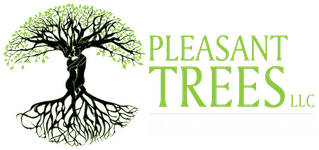Tips for handling tree damage caused by winter storms:
As winter tightens its grip with ice, snow, and fierce winds, trees can suffer greatly as a result. The aftermath of a winter storm often leaves a landscape of damaged and distressed trees. For arborists, homeowners, and property managers, understanding how to respond to this damage is crucial not only for the health of the trees but also for the safety of the surrounding area. In this blog, we’ll explore effective strategies for dealing with tree damage caused by winter storms.
Understanding the Damage:
Winter storms can inflict various types of damage on trees. Heavy snow and ice can weigh down branches, leading to breakage. Strong winds can cause limbs to snap or, in severe cases, uproot entire trees. The extent of the damage may vary depending on the tree species, age, and health. The safest option when assessing and implementing solutions for damaged trees is always to bring in a professional, as they will have the knowledge, experience, and tools to be as safe and efficient as possible.
Safety First: Assessing the Damage
Before addressing any tree damage, prioritize safety. Look out for downed power lines, hanging branches, and cracked limbs that pose immediate hazards. It’s crucial to contact utility companies or emergency services if you encounter these dangers.
Assessing the Tree’s Condition
Once it’s safe, assess the extent of the damage. Consider these factors:
- The size and location of damaged limbs.
- Whether the tree is still structurally sound.
- The tree’s overall health and age.
Pruning with Care
Pruning is essential in addressing storm damage. However, it must be done correctly to prevent further harm to the tree. Here are some tips:
- Remove only broken, hanging, or damaged limbs.
- Make clean cuts to aid healing.
- Avoid topping trees, as this can lead to weak new growth and further damage.
Supporting Recovery
After initial cleanup and pruning, support the tree’s recovery. This can include:
- Watering during dry periods.
- Mulching to provide nutrients and maintain soil moisture.
- Monitoring for signs of stress or disease.
Call a Professional Arborist
Complex situations, such as large broken limbs, trees on power lines, or significant structural damage, require professional assessment and handling. Arborists have the expertise and equipment to safely address these issues.
Preventive Measures for Future Storms
Prevention is key in reducing future storm damage. Regular maintenance, such as proper pruning, health assessments, and corrective measures for existing issues, can strengthen trees and make them more resilient to severe weather.
Dealing with the aftermath of winter storm damage can be challenging, but with a methodical approach and professional guidance, it’s possible to help your trees recover and thrive. Regular tree care and preventive measures play a vital role in minimizing future damage and ensuring the longevity and health of your trees. If you’re unsure about how to handle storm-damaged trees, don’t hesitate to contact a professional arborist near you for assistance.
For more information, or to schedule an appointment with Pleasant Trees, contact us today!
